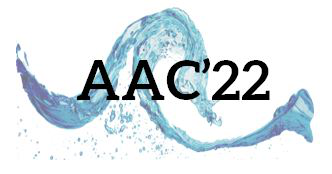Speaker
Description
High fidelity modeling of plasma based accelerators (PBA) requires the use of 3D, fully nonlinear, and kinetic descriptions based on particle-in-cell (PIC) method. Compared to the computationally intensive full 3D explicit PIC code, the quasi-static PIC codes are able to speed up the simulations by orders of magnitude, which allows for modeling the physical problems requiring massive computing resource, such as hosing instability and ion motion effect in PBAs. In addition to the quasi-static approximation (QSA), the Fourier azimuthal decomposition is another effective speedup technique which has been applied into some general-purpose PIC codes. Recently, a new hybrid QSA PIC algorithm that combines the Fourier azimuthal decomposition, QPAD, has been proposed and implemented. QPAD decomposes the electromagnetic fields, charge and current density into azimuthal harmonics and only the Fourier coefficients need to be updated, which reduces the algorithmic complexity of a 3D code to that of a 2D code. Modeling the laser-plasma interaction in a 3D PIC algorithm is also very computationally expensive due to the enormous disparity of physical scales to be resolved. Using ponderomotive guiding center (PGC) approach in QSA algorithm can speed up the simulation by orders of magnitude. We have implemented a azimuthal decomposed PGC algorithm compatible for QPAD. This algorithm permits time steps orders of magnitude larger than the cell size and it can be asynchronously parallelized. Benchmarks and comparisons between a fully 3D explicit PIC code is presented. QPAD provides a highly efficient PIC code for modeling PBAs with long distance or/and ultra-fine spatial resolution. It is also suitable for parameter scanning and optimization problems.
Acknowledgments
This work was supported by NSF and DOE grants.

